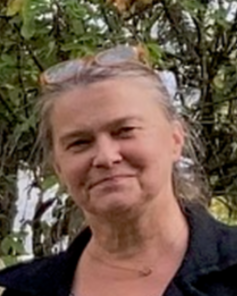Keynote speakers

Helle Ulrich
IMB, Mainz, Germany
Ubiquitin signalling and synthetic lethality in DNA damage bypass
The small posttranslational modifier, ubiquitin, regulates many aspects of genome maintenance. In response to DNA replication stress, ubiquitin controls the properties of the essential replication factor, PCNA. Whereas monoubiquitylation activates translesion synthesis by damage-tolerant DNA polymerases, modification by lysine (K) 63-linked polyubiquitin chains is required for an error-free pathway of damage avoidance involving template switching. In mammalian cells, ZRANB3, a reader of K63-linked chains on PCNA, promotes replication fork reversal. Yet, the mechanism by which PCNA polyubiquitylation mediates damage bypass is still poorly understood. We have now used custom ubiquitin protein ligases to probe the consequences of PCNA polyubiquitylation in isolation from other damage-induced pathways in human cells. We found that unscheduled modification of PCNA with K63-linked chains results in rapid replication collapse and checkpoint activation, and this is accompanied by a complex pattern of PCNA ubiquitylation involving chain branching. Moreover, the same pattern was found to govern the cellular reaction to a variety of genotoxic agents as well as the chemosensitivity of BRCA1-deficient cancer cells towards inhibition of the PCNA-specific deubiquitylase, USP1. Overall, our work highlights the previously unappreciated role of branched ubiquitin chains on PCNA in the replication stress response and provides a mechanistic basis for synthetic lethality in BRCA1-deficient cancers.

Michael Lichten
NCI, NHI, New York, US
A garden of forking paths: branching, switching and reversal in meiotic recombination
Meiotic recombination involves repair of double strand DNA breaks by homologous recombination to form crossovers and noncrossovers. Current models suggest that different mechanisms form these two products: noncrossovers by synthesis dependent strand annealing; COs by double Holliday junction formation and resolution. In testing these predictions, we found evidence for remarkable dynamism during meiotic DSB repair. This includes switching between repair templates and strand invasion by both DSB ends during both noncrossover and crossover recombination, and extensive branch migration by the Holliday junction intermediates that are CO precursors. I will discuss the mechanistic and regulatory implications of these findings.
Invited speakers

Maria Moriel-Carretero
CRBM, Montpellier, FR
Stage for lipids in replication, recombination and repair
Along with nucleic acids, proteins, and carbohydrates, lipids are one of the four major biomolecules in living organisms. Cellular processes are mediated by the concerted action of these biomolecules, thus giving rise to complex interaction networks. Yet, while two-thirds of the cell proteome is in constant interaction with multiple lipid species, there is a poor definition of this type of interaction specifically within the nucleus, and almost none of lipid-nucleic acid interactions. This disequilibrium relates to historical reasons, but also to the difficulty of applying classical lipid-related techniques to a territory such as a nucleus. As a consequence, the limited research in this domain translates into scarce and rarely gathered information, further discouraging new initiatives.
Yet, the nucleus is delimited by a double membrane bilayer, and envelope-derived lipid structures, namely the nucleoplasmic reticulum and the nuclear lipid droplets, occupy the nucleoplasm. Nuclear condensate organelles such as the nucleoli, the splicing speckles and DNA repair foci harbor phosphoinositide species, and the biology of chromatin (and of chromosomes) is profoundly modulated by physical and genetic interactions with phospholipids. Additionally, we recently discovered that the signaling and repair of DNA double strand breaks is controlled by a sterol-phosphoinositide loop. By building on that knowledge, I will present new findings on the impact of lipid circuits in the response to replicative stress, replication fork processing, lesion repair and cell viability. Our research aims at creating awareness of the importance, and the potential, of considering the lipid dimension in the field of genome integrity.

Frederic Beckouet
CBI, Toulouse, FR
Mechanisms controlling cohesin dependent loops
Cohesin is a ring-shaped complex known to organise chromatin into loops. These cohesin-dependent loops are also important for regulating biological processes such as transcription, DNA repair and VDJ recombination. The mechanisms regulating the establishment of cohesin-dependent loops are the subject of active research. Cohesin is thought to be established via a process known as ‘loop extrusion’ (LE). In this process, cohesin captures a small loop of chromatin which is then expanded by translocation of cohesin along the chromatin. We and others have recently described that Wpl1 regulates DNA loop length in living cells by dissociating cohesin from DNA. How Wapl dissociates cohesin from DNA is not fully understood. We have therefore developed a method that induces thiol-specific cross-linking in living cells in order to decipher the molecular mechanisms by which Wpl1 regulates DNA loop length along chromosomes.

Gilles Fischer
Institut de Biologie Paris Seine, Paris, FR
Transient phenotypic mutators in yeast colonies and their impact on the specie genetic diversity
Understanding the pace at which all types of mutations accumulate is of paramount importance in the field of genome dynamics and evolution. We found a surprising burst of mutations within growing yeast colonies, occurring independently of external stressors, indicating that, during short intervals, a small subset of cells within the colonies undergoes a mutational overdrive. Notably, these mutator cells do not represent genetically stable mutators with mutations in genes associated with genome stability. Instead, they stem from a strong mutator phenotype that was transiently expressed in genetically wild-type cells. This phenomenon, previously underestimated or even overlooked, holds significant importance and may have far-reaching implications, particularly for the genetic diversification of genomes at the species scale.

Miguel Godinho Ferreira
IRCAN , Nice, FR
cGAS-STING IS RESPONSIBLE FOR PREMATURE AGING IN TELOMERASE DEFICIENT ZEBRAFISH
Telomere shortening occurs in multiple tissues during human aging. As telomeres become critically short, they are sensed as DNA damage and activate p53, resulting in apoptosis or replicative senescence. Consequently, short telomeres reduce tissue cell proliferation, leading to loss of homeostasis and aging. The cGAS-STING pathway senses short and dysfunctional telomeres. This pathway is part of the innate immune system, signalling inflammation upon viral infection and was shown to modulate cell senescence.
We study the consequences of telomere shortening in zebrafish at the organism level. Like humans, zebrafish telomeres shorten to critical length during normal aging. Telomerase deficient zebrafish (tert) die prematurely while recapitulating aging phenotypes, such as reduced fertility, cachexia, increased inflammation, and age-associated diseases, such as cancer.
We show that STING is responsible for tert zebrafish premature aging. We generated sting tert double mutants and observed reduced cell senescence and interferon responses when compared to tert single mutants. Consistently, sting tert double mutants had low p53 levels and increased cell proliferation. At the organism level, we observed that inactivation of STING rescues infertility, fewer spontaneous cancers, while increasing the lifespan of tert mutants by 40%. Thus, telomere shortening activates cGAS-STING, resulting in type I interferon inflammation and premature aging of tert mutants.

Bernardo Reina San Martin
IGBMC, Strasbourg, FR
Fam72a regulates the balance between error-prone and error-free DNA repair during antibody diversification.
During the course of immune responses B cells diversify their immunoglobulin (Ig) genes by somatic hypermutation (SHM) and class switch recombination (CSR). These reactions establish highly specific and adapted humoral responses by increasing antibody affinity and by allowing the expression of a different antibody isotype with unique immunological functions.
Both of these reactions are initiated by Activation Induced Cytidine Deaminase (AID), an enzyme that deaminates cytosines in DNA. AID-induced lesions are recognized mainly by Uracil DNA glycosylase (Ung) and are processed in different ways to trigger mutations during SHM and/or double stranded DNA breaks during CSR.
Currently, the mechanisms underlying AID-induced DNA damage and its correlation with error-prone DNA repair remain unclear. We have performed a comprehensive genome-wide CRISPR/Cas9 knockout screen targeting genes associated with CSR in which, Fam72a emerged as a pivotal regulator influencing the balance between error-prone and error-free DNA repair. Specifically, we highlighted Fam72a’s role in negatively regulating the protein levels of Ung2, the nuclear isoform of Ung (Rogier et al., Nature 2021).
To get further insight, we have undertaken a targeted CRISPR/Cas9 screen focusing on genes encoding for proteins that interact with Fam72a and/or Ung2 (identified through co-immunoprecipitation and mass spectrometry) and using an established Ung2EGFP knockin B cell line.
This comprehensive approach seeks to unravel the intricate connections between Fam72a, Ung2, and their interacting partners, shedding light on the molecular processes underlying error-prone DNA repair in the context of AID-induced DNA damage during antibody diversification.

Joanna Timmins
Institut de Biologie Structurale, Grenoble, FR
Structural insight into the dynamics of bacterial nucleotide excision repair
Nucleotide excision repair (NER) is a universal and versatile DNA repair pathway, capable of removing a very wide range of lesions, including UV-induced pyrimidine dimers and bulky adducts. In bacteria, NER involves the sequential action of the UvrA, UvrB and UvrC proteins to release a short 12- or 13-nucleotide DNA fragment containing the damaged site. Although bacterial NER has been the focus of numerous studies over the past 40 years, a number of key questions remain unanswered. To address some of these questions, we have performed a combination of structural and biochemical studies to shed light on the dynamic nature of this repair process. The development of a robust in vitro NER system using purified UvrABC proteins from the radiation resistant bacterium, Deinococcus radiodurans, together with biochemical, mutational and structural studies, have notably shed light on the complex role of the UvrC endonuclease

Marie Noelle Prioleau
IJM, Paris, FR
Interactions between replication origins and transcription
DNA replication is initiated at thousands of replication origins whose controlled localisation, activity and firing time determine the spatiotemporal program of replication in vertebrates. Under replicative stress, two main types of chromosomal regions are prone to incomplete replication prior to mitosis, resulting in chromosomal instability. Fragile regions of the first type (early replicating fragile sites, ERFSs) reside in early replicating domains, which are characterized by their richness in strong origins, and short, highly transcribed genes. These properties favour the formation of R-loops, potentially delaying or blocking the progression of replication forks. In striking contrast, fragile regions of the second type (common fragile sites, CFSs) are found in late-replicating and modestly expressed very long genes (>300 kb). The instability of CFSs depends on transcription-dependent paucity in initiation events. A possible explanation is that ongoing transcription actively removes the pre-replication complexes (pre-RCs), thereby reducing the density of potential origins across the host genes. Thus, transcription-replication interferences (TRIs) are at the root of the instability of these two types of hard-to-replicate regions, albeit by different mechanisms. To answer the question of how transcription-replication conflicts are regulated, we worked in a genetically controlled system. We previously defined an efficient origin of replication, containing two potentially forming G-quadruplexes (pG4s) on the same strand (dimeric pG4s), devoid of transcriptional activity in the genetically tractable avian DT40 cells. Dimeric pG4s are associated with ~ 40% of efficient origins genome-wide in human and chicken. Therefore, our minimal origin is a good model system to study transcription-replication interferences. We have inserted this model origin into different chromosomal contexts, corresponding to either ERFS or CFS, and tested its interaction with transcription. I will describe how this model origin behaves in these different chromatin contexts and how these results may provide important mechanistic insights into the prioritisation of two potentially conflicting DNA-dependent processes and a better understanding of the underlying causes of instability in ERFSs and CFSs.

Pascale Bertrand
CEA Fontenay aux roses, FR
Lamin B1 and genome stability
Lamins are key components of the nuclear envelope. Lamins, beside their structural role, have various functions on DNA metabolism: DNA replication, gene expression and DNA repair. Nuclear shape alteration and misregulation of lamins level have been reported in different tumors. Altered lamin levels, in particular the upregulation of lamin B1, are often linked to tumor aggressiveness. However, its role on genome stability has been poorly studied. We reported unexpected and direct roles of lamin B1 in double-strand break repair, telomere stability and hence in genome stability. Lamin B1 interacts directly with 53BP1. After genotoxic stress, dissociation between lamin B1 and 53BP1 occurs, enabling recruitment of 53BP1 to DNA damage. This dissociation depends on ATM and 53BP1 phosphorylation. Upregulation of lamin B1 levels, at a level found in tumors, prevents recruitment of 53BP1 to DNA lesions, reduces non-homologous joining, thereby leading to persistent double-strand breaks. These data highlighted a new role of lamin B1 in double-strand break repair. Our unpublished data also reveal that lamin B1 upregulation is associated with signs of replication stress). This apparent replication stress is associated with a deficiency of BRCA1 and RAD51 foci formation and of homologous recombination. Some consequences of these defects will be presented. In addition to its impact on DSB repair and replication, we have reported an impact of lamin B1 on telomere stability through the disruption of telomere protection by TRF2, a major component of the telomere shelterin that prevents DNA damage response at telomeres ends and the resulting telomere fusions. Upregulation of lamin B1 level leads to a mislocalization of TRF2 at nuclear envelope impeding its correct association at telomeres leading to telomere damage, shortening and fusions. Depletion of lamin B1 also leads to telomere instability, suggesting a physiological role of lamin B1 in telomere maintenance. We now report that lamin B1 interacts directly with TRF2 and we will present novel data suggesting a role of lamin B1 in both shelterin stability and regulation of telomere replication. In conclusion, our data highlight new roles of lamin B1 and nuclear envelope integrity on genome stability, allowing us to speculate that the altered level of lamin B1 found in tumors, the cause of which remains unexplained, may play a role in the process of tumorigenesis.

Bernard Lopez
Institut Cochin, CNRS, FR
RAD51 prevents ageing but favors oncogenesis and can promote genetic instability through an homology-independent process
Homologous recombination (HR) plays essential roles in genome stability/plasticity and is generally considered a tumor suppressor pathway. Indeed, many HR genes are altered in tumors. However, despite its pivotal role in HR, no implication of RAD51 inactivation in cancer has been established, constituting the “RAD51 paradox”. One hypothesis accounting for this paradox is based on the fact that mediator/accessory proteins that are mutated in cancer promote RAD51 loading and stabilization on damaged DNA. Mutations affecting these proteins not only suppress HR but also make damaged DNA accessible to alternative nonconservative repair processes such as single-strand annealing (SSA) and alternative end-joining (A-EJ), thus increasing genome instability. This raises the question: does oncogenesis result from HR ablation alone or is the concomitant stimulation of mutagenic nonconservative pathways necessary?
We took advantage of an engineered dominant negative form of RAD51 (SMRad51) that suppresses HR, but still prevents stimulation of the alternative nonconservative repair pathways due to its DNA-binding capability. We engineered two mouse models with ubiquitous conditional expression of SMRad51 or exogenous wild-type mouse Rad51, induced by doxycycline (Dox). In addition, this strategy enabled us to overcome the embryonic lethality problem of the KO of HR genes, since HR was inactivated after birth through Dox-mediated induction of SMRad51 expression.
Suppression of HR through SMRad51 expression led to replicative stress, systemic inflammation, progenitor cell exhaustion, premature aging and a reduced lifespan but, surprisingly, did not induce tumor formation. Expressing SMRAD51 in a breast cancer predisposition mouse model (PyMT) decreased the number and the size of tumors, revealing an anti-tumor activity of HR decrease by SMRAD51. We propose that these in vivo phenotypes result from chronic replication stress caused by HR decrease, which preferentially targets proliferative cells such as progenitors and tumor cells.
Although HR deficiency is generally thought to be a cause of cancer, this work shows that, in contrast, specifically reducing RAD51-mediated HR, without stimulating nonconservative DNA repair pathway, does not lead to oncogenesis and, in fact, prevents tumorigenesis, but primarily leads to aging. These data underline the importance of RAD51 activity for progenitor homeostasis, preventing aging, and more generally for the balance between cancer and aging.
Finally, depending on time, I will mention data describing a provocative role of HR central players in creating mutagenic genomic rearrangements, in a homology-independent manner, another against-the-canon view of a pathway mostly considered to be accurate and error-free (for more molecular details please see the poster of Elise Rabut).